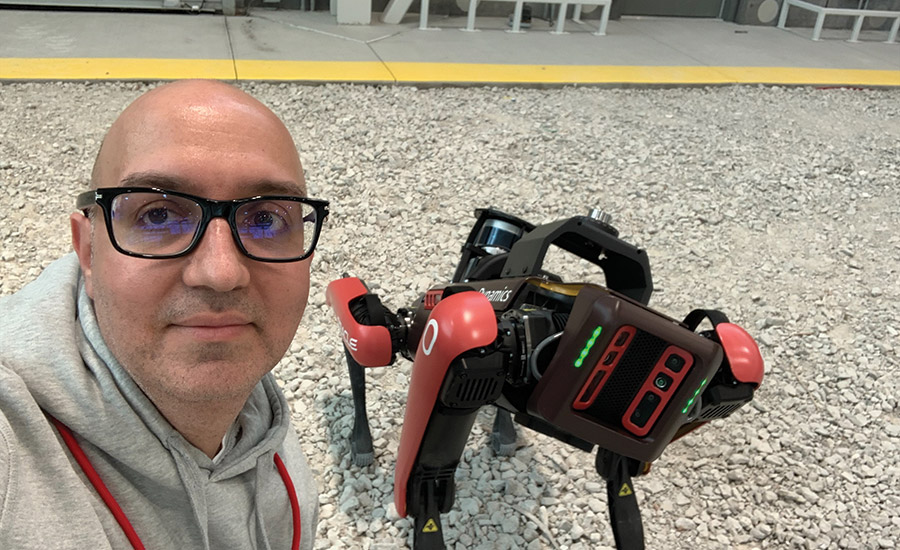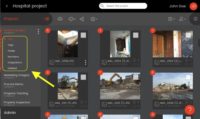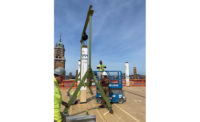Related Article:
Oracle Innovation Lab Opens; Chicago Zoo Lion Cub has Pepper Connection
Back to:
25 Top Newsmakers
The 30,000-sq-ft Oracle Innovation Lab on the company’s Deerfield, Ill., campus has demonstration space for construction technologies ranging from robots to drones to building automation. While it opened in 2019, the pandemic delayed any serious experiments from getting underway until April 2022.
“Our last visitor [before the pandemic] was Saudi Aramco in February 2020,” recalls Burcin Kaplanoglu, an Oracle vice president and the co-founder of the lab. That gap actually set up the success the company and its many hardware and software technology partners had this past year in running experiments and creating actionable data and results for contractors. And the plan is coming to fruition. This year the lab has seen trials of construction drones performed under NIST standards and trials of different reality-capture technologies.
“What we’ve tried to do from the beginning is to create a test bed where things can come to life in 12 to 24 months,” says Kaplanoglu, who was a project manager and executive for Lendlease before joining Oracle in 2017. “There are places like this that exist that are built more like demonstration centers.... We can try things here; we can improve them.”
Under his guidance, Oracle has committed to hardware agnosticism at the lab and has run tests alongside other cloud technology companies such as Esri. Experiments to date have involved contractors such as Pepper Construction, Clayco and Bechtel. Boston Dynamics’ Spot robot, Hilti’s Jaibot and Milwaukee Tools’ power tools all have been tested there. Scanning equipment from Faro, sensors and cameras built into personal protective equipment from WakeCap and Triax Technologies and a 5G network from Verizon are some of the complex hardware being used in construction scenarios at the lab.
“That was the second-most important piece, being a trusted partner to the construction ecosystem,” Kaplanoglu says. “It can be small companies, or it can be very large companies, but [it’s about] making them feel that we trust in them, [so] they entrust in us to come to our space and invest.”
Andy Verone, the lab’s other co-founder and an Oracle Innovation vice president, recruited Kaplanoglu to the company with that in mind.
“We wanted an immersive experience, a simulated work site, someplace that we could come together to drive that innovation,” he says. “That was really the design criteria. Develop some place that people feel safe and they can share their ideas and the fact that they may have shortcomings in that process of plan, build, operate. Then innovate.”
Verone said he was drawn to Kaplanoglu’s approach and experience because of his application of construction technologies and his familiarity with them.
Verone said that everything being tested and used in experiments at the lab is readily available for contractors looking to use it on site. The lab offers a test bed for technologies, sometimes competing ones, that is available to all.
The NIST standard construction drone racing experiments were completed in September. The results of the immersive reality-capture experiment are still being compiled by Oracle and its partner for the experiment at the University of Illinois. They will be finalized in the coming weeks.
The success of the lab already has led Oracle to invest in testing spaces located in other global construction markets. The second innovation lab already has broken ground at Oracle’s London campus, and a third is planned for Sydney, Australia.
“All of this technology already exists,” Kaplanoglu says. You just have to figure out how to make it work for yourself and your company.”






Post a comment to this article
Report Abusive Comment